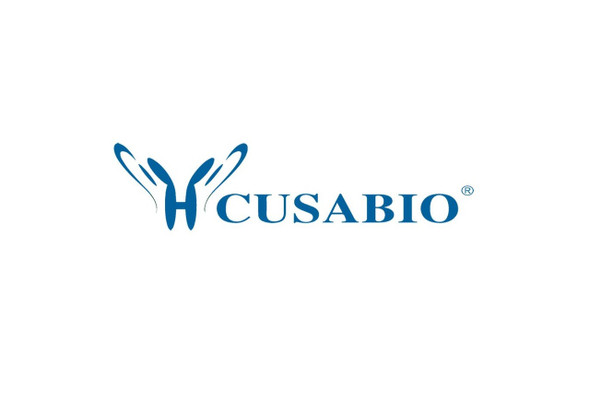Cusabio Human Recombinants
Recombinant Human Neuronal calcium sensor 1 (NCS1) | CSB-EP008983HU
- SKU:
- CSB-EP008983HU
- Availability:
- 13 - 23 Working Days
Description
Recombinant Human Neuronal calcium sensor 1 (NCS1) | CSB-EP008983HU | Cusabio
Alternative Name(s): Frequenin homolog Frequenin-like protein Frequenin-like ubiquitous protein
Gene Names: NCS1
Research Areas: Neuroscience
Organism: Homo sapiens (Human)
AA Sequence: GKSNSKLKPEVVEELTRKTYFTEKEVQQWYKGFIKDCPSGQLDAAGFQKIYKQFFPFGDPTKFATFVFNVFDENKDGRIEFSEFIQALSVTSRGTLDEKLRWAFKLYDLDNDGYITRNEMLDIVDAIYQMVGNTVELPEEENTPEKRVDRIFAMMDKNADGKLTLQEFQEGSKADPSIVQALSLYDGLV
Source: E.coli
Tag Info: N-terminal GST-tagged
Expression Region: 1-190aa
Sequence Info: Full Length
MW: 48.7 kDa
Purity: Greater than 90% as determined by SDS-PAGE.
Relevance: Neuronal calcium sensor, regulator of G protein-coupled receptor phosphorylation in a calcium dependent manner. Directly regulates GRK1 (RHOK), but not GRK2 to GRK5. Can substitute for calmodulin. Stimulates PI4KB kinase activity. Involved in long-term synaptic plasticity through its interaction with PICK1. May also play a role in neuron differentiation through inhibition of the activity of N-type voltage-gated calcium channel
Reference: "Frequenin-like Ca2+-binding protein (flup) modulates fast inactivation of mammalian presynaptic A-type K-channel." Lindemeier J.R., Hauenschild A., Pongs O. Submitted (JAN-1995)
Storage: The shelf life is related to many factors, storage state, buffer ingredients, storage temperature and the stability of the protein itself. Generally, the shelf life of liquid form is 6 months at -20?/-80?. The shelf life of lyophilized form is 12 months at -20?/-80?.
Notes: Repeated freezing and thawing is not recommended. Store working aliquots at 4? for up to one week.
Function: Neuronal calcium sensor, regulator of G protein-coupled receptor phosphorylation in a calcium dependent manner. Directly regulates GRK1 (RHOK), but not GRK2 to GRK5. Can substitute for calmodulin (By similarity). Stimulates PI4KB kinase activity (By similarity). Involved in long-term synaptic plasticity through its interaction with PICK1 (By similarity). May also play a role in neuron differentiation through inhibition of the activity of N-type voltage-gated calcium channel (By similarity).
Involvement in disease:
Subcellular Location: Golgi apparatus, Cell junction, synapse, postsynaptic cell membrane, postsynaptic density, Cytoplasm, perinuclear region, Cytoplasm, Cell membrane, Peripheral membrane protein, Membrane, Lipid-anchor
Protein Families: Recoverin family
Tissue Specificity:
Paythway:
Form: Liquid or Lyophilized powder
Buffer: If the delivery form is liquid, the default storage buffer is Tris/PBS-based buffer, 5%-50% glycerol. If the delivery form is lyophilized powder, the buffer before lyophilization is Tris/PBS-based buffer, 6% Trehalose, pH 8.0.
Reconstitution: We recommend that this vial be briefly centrifuged prior to opening to bring the contents to the bottom. Please reconstitute protein in deionized sterile water to a concentration of 0.1-1.0 mg/mL.We recommend to add 5-50% of glycerol (final concentration) and aliquot for long-term storage at -20?/-80?. Our default final concentration of glycerol is 50%. Customers could use it as reference.
Uniprot ID: P62166
HGNC Database Link: HGNC
UniGene Database Link: UniGene
KEGG Database Link: KEGG
STRING Database Link: STRING
OMIM Database Link: OMIM










